
Freya Bennett
Within my research I am exploring the current significance of Vanitas paintings in postmodern practice. Vanitas are historical still life paintings about mortality, which first originated in Holland during the 1600s. Even though “memento mori” (remember you must die) has fallen from consciousness compared to its historical relevance, the main focus points of the vanitas are still relevant today. Making the viewer reflect on their own relationship with mortality, consumption and religion.
The macabre has been a topic of fascination by artists and specialist practitioners for centuries. This research applies the ideas of Jean Francois Lyotard and Katherine Hauser to both historical and contemporary creative works of Evert Collier, Audrey Flack and Youngmin Kang. I am using this research to support my painting practice, which takes inspiration from artists like Harmen Steenwijck and Andy Warhol.
Findings of my research so far are pointing to an interesting debate around feminine vs feminist within contemporary vanitas works, positing the question of whether it is the objects chosen or simply the gender of the artist that determines the significance of the work. This is strongly related to the prominent issue of feminism in today’s society. I am finding this interesting as the more research I do the more in depth the Vanitas paintings go, there is a lot more than meets the eye, which I intend to explore.
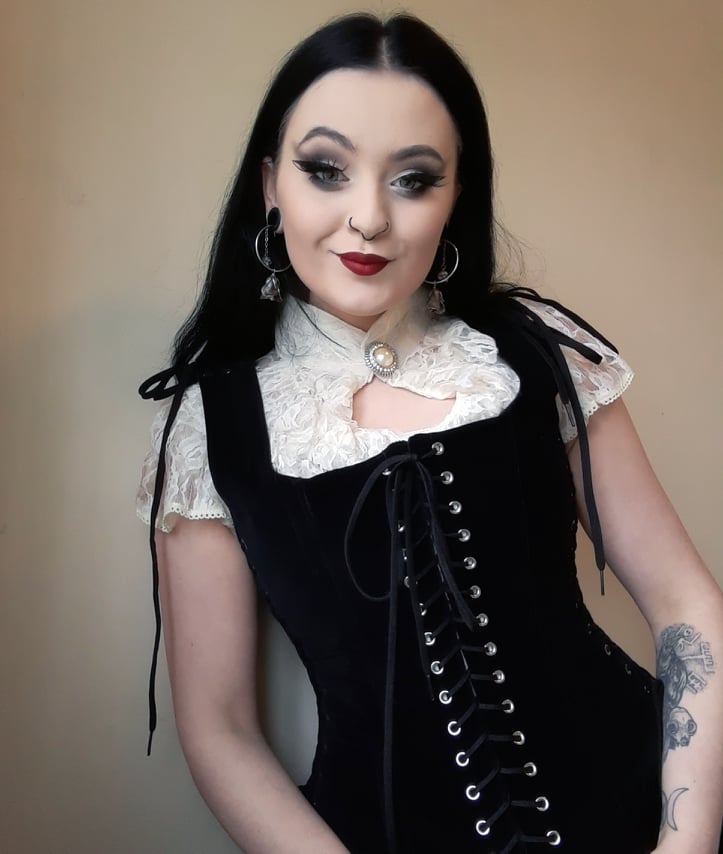
Freya Bennett
![Collier,E. (1663) Still Life with Books and Manuscripts and a Skull.[Oil paint on canvas]. National Museum of Western Art, Tokyo.](https://www.lancaster.ac.uk/users/oed-2022ugconference/wp-content/uploads/ug2022/y3z2y55t/Vanitas.jpg)
Collier,E. (1663) Still Life with Books and Manuscripts and a Skull.[Oil paint on canvas]. National Museum of Western Art, Tokyo.
I am researching how the messsages of historical Vanitas paintings are still relevant in creative practice today and exploring how practitioners are drawing on the past traditions of the Vanitas to create works that reflect the concerns of modern life. As an artist myself I am using this research to support my painting practice.
Frame of Reference. (2021) Vanitas: Depicting Mortality Through Art. Available at: https://www.youtube.com/watch?v=GiKUozl4Ess .
What is Vanitas?
Works about death and mortality have been around for centuries. Vanitas works are still life paintings which went beyond late medieval "memento mori" (remember you must die) paintings.They entrance the viewer into reflecting on their own relationship with mortality, greed and religion.
Vanitas paintings flourished in Holland during the 1600s when still life paintings were at their peak as a celebration of luxury imported goods. The greedy pursuit of wealth and possessions was seen as a slide into moral and spiritual bankruptcy. During this time in Holland people were surrounded by religious tension, war and disease, which could have contributed to an increasing interest in such images (Schiffer,1998).
Vanitas still life works don't just visualise death, they are prominent warnings of the vanities of this world: greed, sin, addiction, lust and material possessions ( to name a few) will not prevent the inevitable. Traditional Vanitas declined in popularity from the 1650s, but its symbolism and iconography continues within creative practice today.
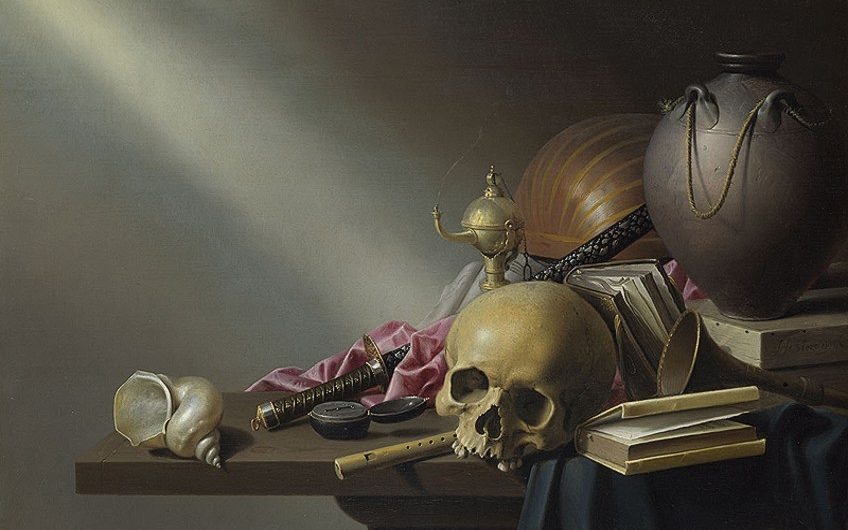
Steenwijck,H. (1640) Still Life an Allegory of the Vanitas of Human Life. [Oil paint on oak.] The National Gallery, London.
A Postmodern Perspective.
It is interesting to see how Postmodernism has transformed the Vanitas from its traditional imagery. From an era of anything goes, the works are presented more playfully and more appealing aesthetically compared to their historical counterparts. One example of this is Andy Warhols silkscreens "Skulls" (1976). Like many other practitioners, the macabre has been a topic of fascination for centuries and Warhol is no exception, particularly within his later works. From my knowledge,"Skulls" is a meditation on death, which comments on our consumerist society and questioning the modern relationship with religion in our skeptical landscape.
I am researching this area as I have also been fascinated with the macabre and how practitioners portray their different perspectives on a topic that is inevitable. Some are hopeful within their approach with iconography of redemption and reformation, whereas others highlight the rapid passing of time and the demise of human life. With materlialistic ideals dominating western culture I feel there is no better time to explore this subject.
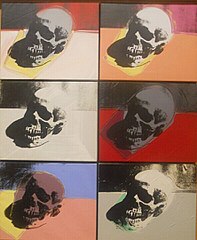
Warhol, A. (1976) Skulls. [Acrylic paint and silkscreen on 6 canvases]. Tate, London.
Audrey Flack is one of the more intriguing artists who took the Vanitas into the modern era. Flack is an internationally acclaimed painter and sculptor, who is also a pioneer of the Photorealism movement.She highlights the need for feminism within creative practice. Her works stood out amongst the canvases of trucks, cars and motorcycles by male Photorealists. With critics calling Flack's work more "intimate" and "excessively feminine". Her gender almost jeopardised her position in the movement itself. However, as Flack's work is associated with the "feminine", it seemed to discredit her within the Feminist movement, among feminist artists and critics who created and sought more traditional feminist pieces(Hauser,2002). Was this because of the objects Flack displayed within her still lifes; cosmetics, perfumes and jewellery; or simply because of her gender?
Flacks 1970s Vanitas series, is a massive inspiration to my own practice. She merges traditional Vanitas imagery with the excess of consumer culture to create huge bright photorealistic works. Within her still lifes there is the generic iconography with objects like a skull,burning candles, fruit, flowers and hourglass however, unlike traditonal Vanitas paintings, there are objects like the rouge jars, powder puffs, lipsticks and perfume. This is where the femininty vs feminist argument comes into play. As a female artist myself this makes me not afraid to display my own femininity within my works.By experimenting with bright bold colours and objects, I can produce visual commentary on the female perspective of the Vanitas,which historially was majorly dominated from the male point of view.

Flack, A.(1977) Wheel of Fortune. [Oil paint over acrylic paint on canvas].
Research into Practice.
My practice is my main methodology. Through my research into the Vanitas and Postmodernism I am expressing my views and findings through the medium of acrylic paint and using bright bold colours to underline hope within such a dark macabre subject matter.
The purpose of my work is to engage viewers to reflect on their own lives from a more meaningful perspective, rather than focussing on material possessions and societal norms of beauty and achievement.
"Art is the concretization of the energy, hopes, and aspirations of humankind; every era generates its own energy." (Audrey Flack).
With this in mind, the Vanitas is still relevant today as a warning to find a higher purpose, both as an individual and wider society as a whole.
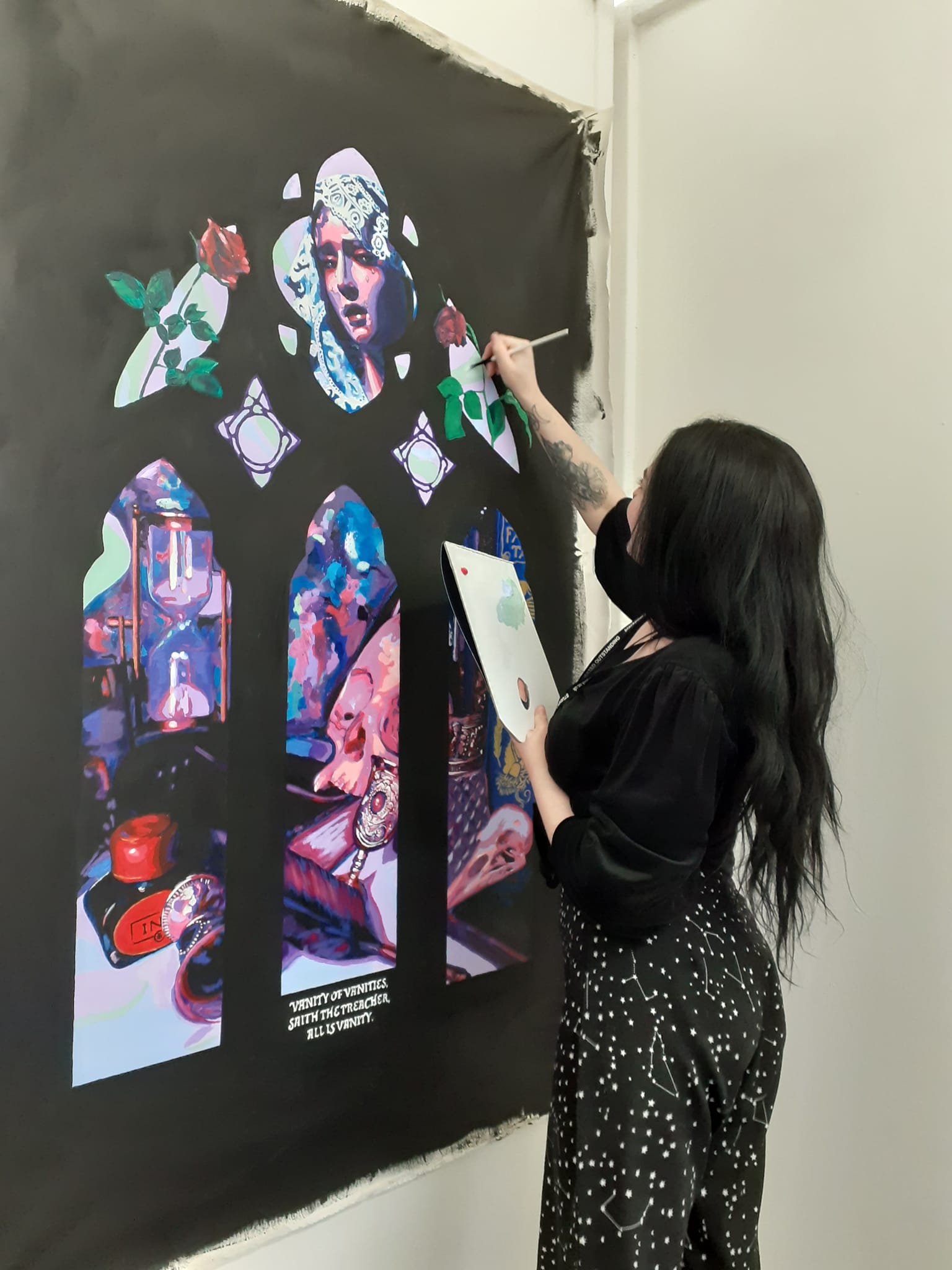
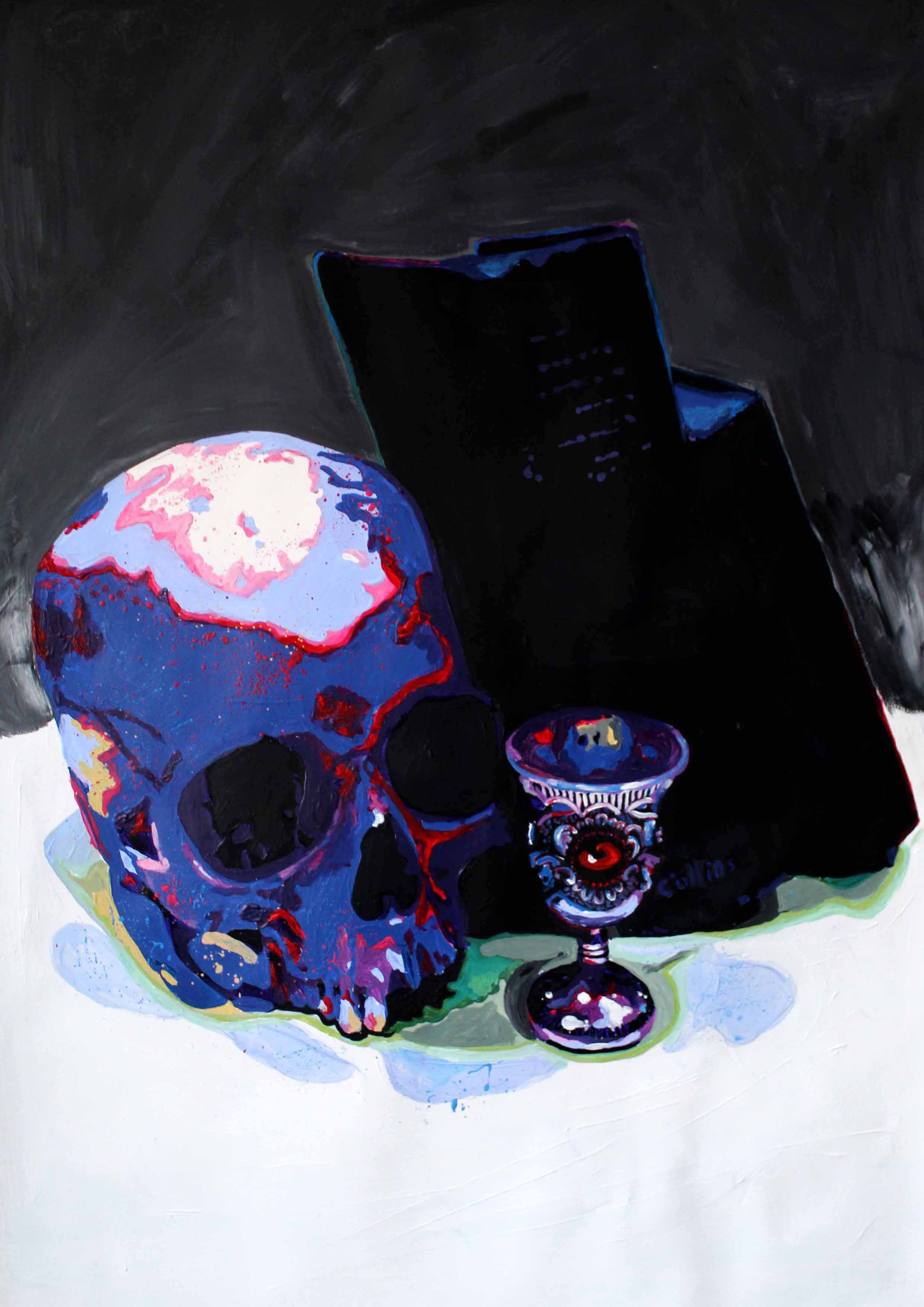
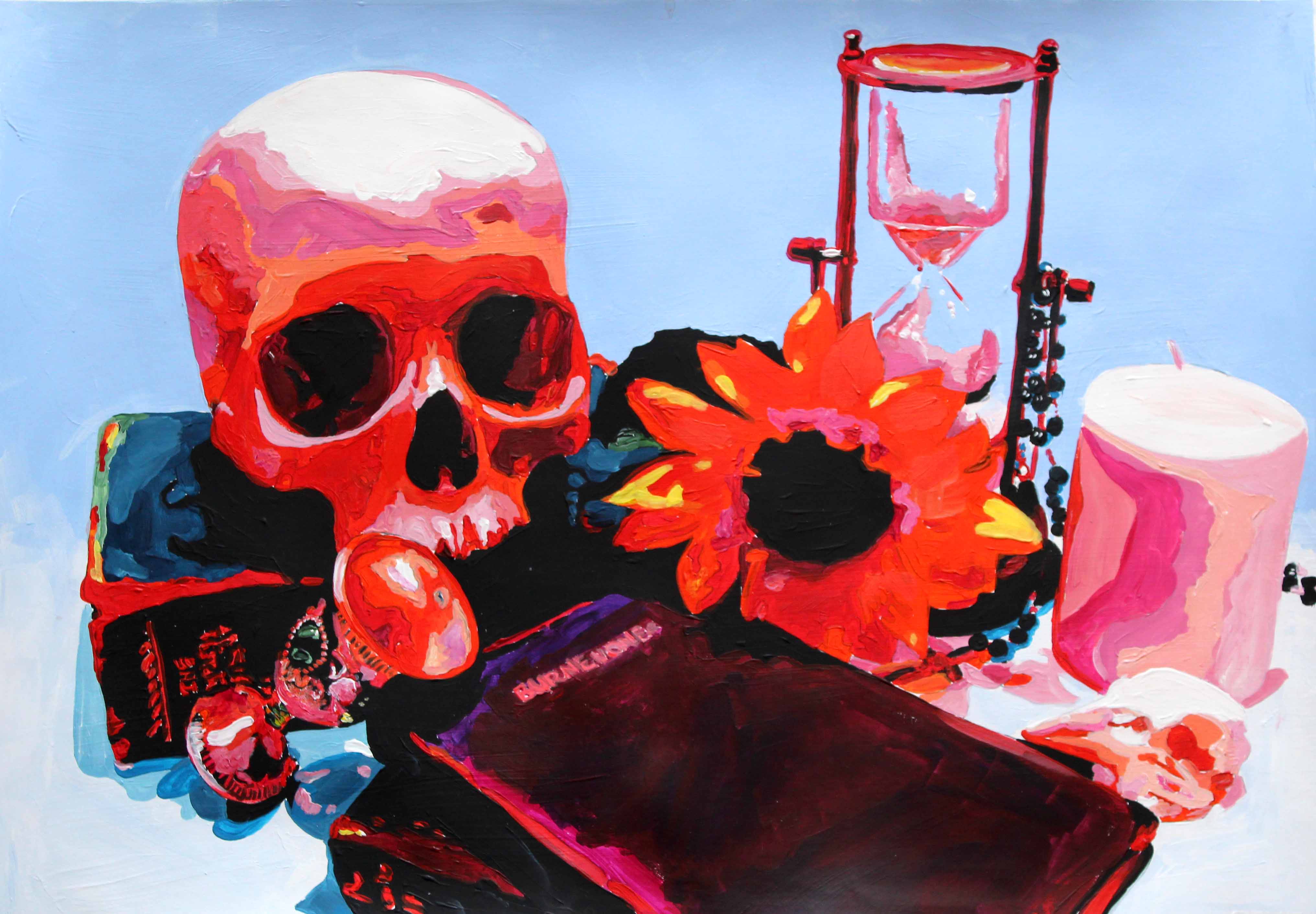
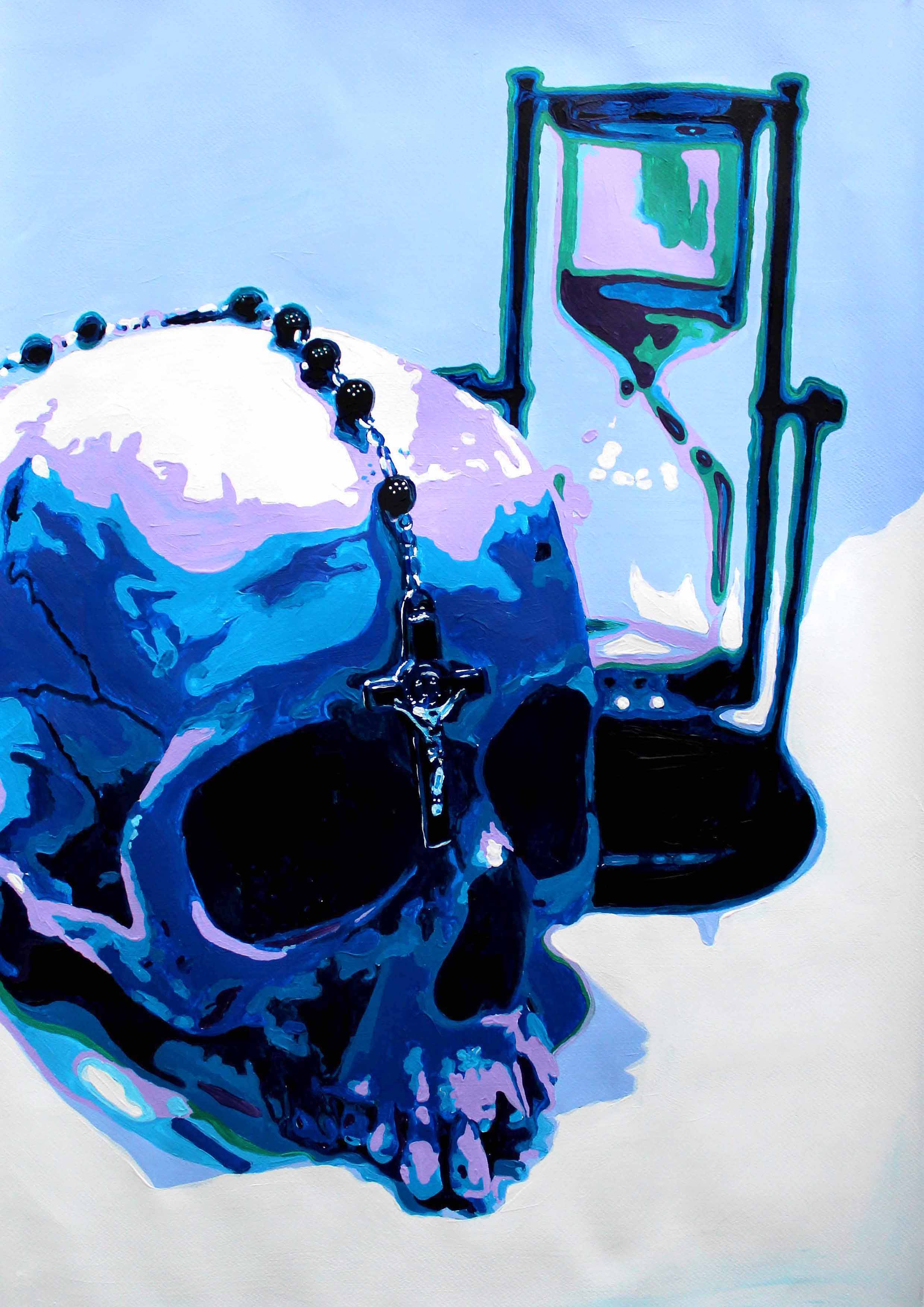
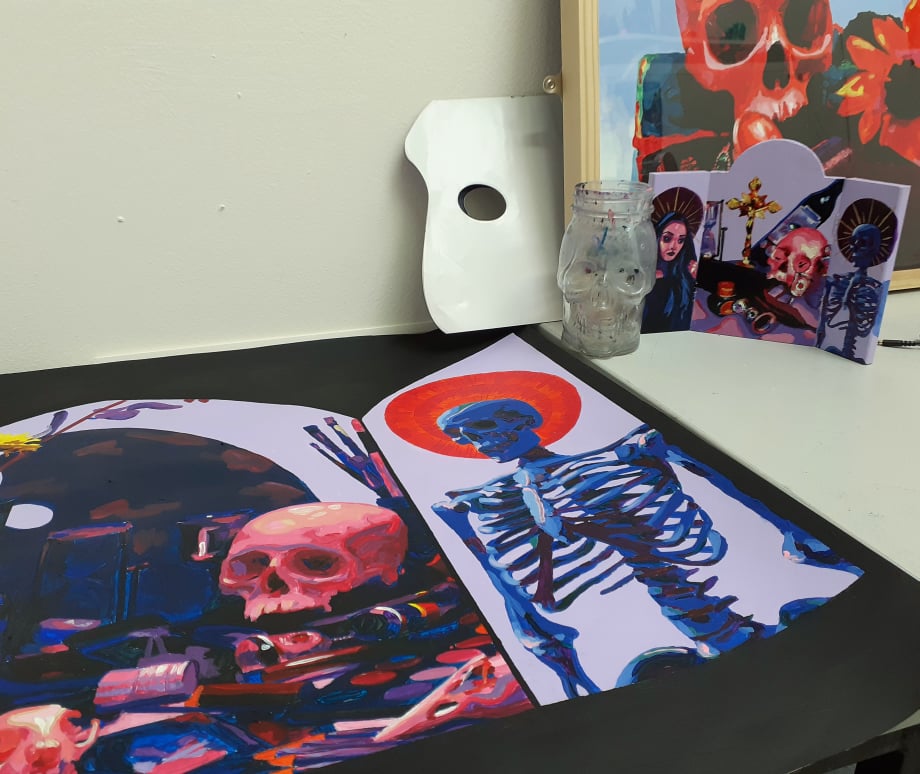
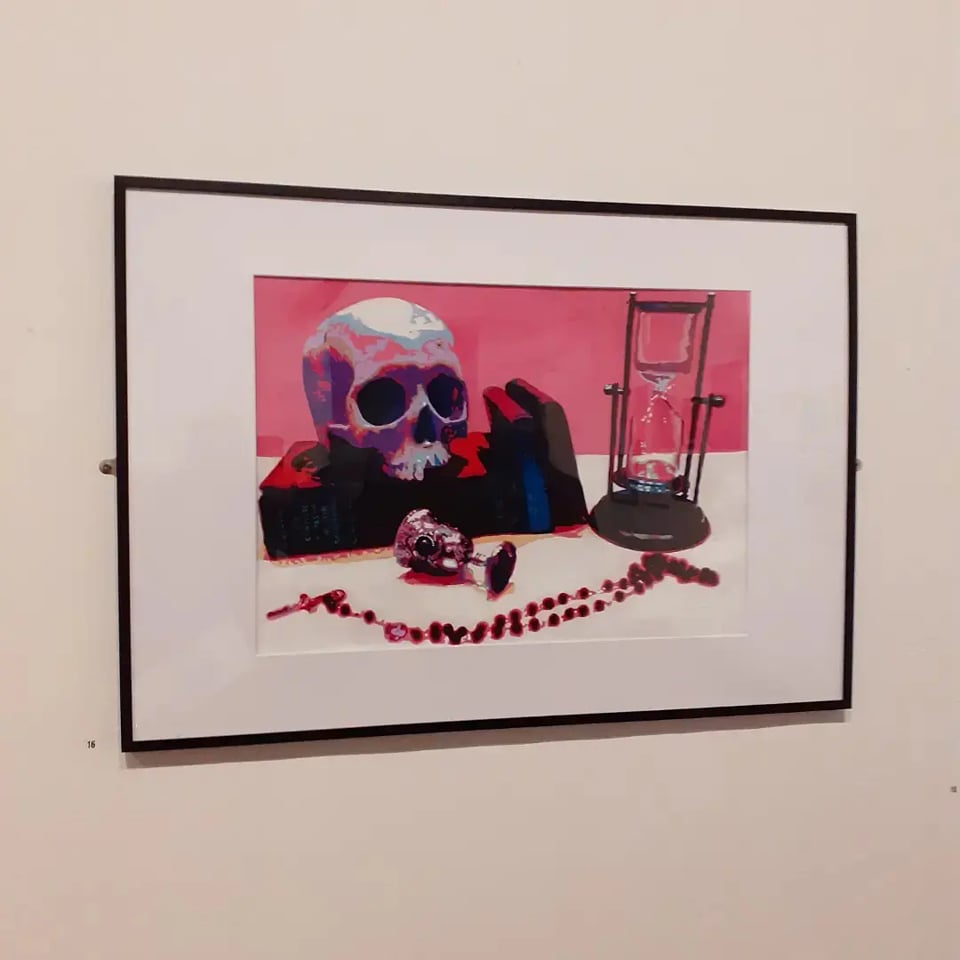
To read my research further or to view my online portfolio my Website is:
Acknowledgements.
Many thanks goes to the amazing Fine Art tutors at Blackpool School of Arts: Nick Kowalski, Ann Carragher and Tracey Eastham for their support and guidance throughout my studies.
References.
Ebert-Schiffer,S.(1998) Still Life: A History. New York, Harry N. Abrams Incorporated. P.136, 145.
Ravenal.J.B. (2000) Vanitas: Meditations on Life and Death in Contemporary Art. 1st edn. Virgina: Virgina Museum of Fine Arts.
Hartley, K.(2007) Warhol: A Celebration of Life... and Death.1st edn. National Galleries of Scotland.
Hauser, K.(2002). Audrey Flack's Still Lifes: Between Femininity and Feminism. Womans Art Journal, 22, P 26-30.
Flack, A. (1985) Audrey Flack on Painting.2nd edn. New York, Harry N. Abrams Incorporated.
Slide 1 image (max 2mb)
Slide 1 video (YouTube/Vimeo embed code)
Image 1 Caption
Slide 2 image (max 2mb)
Slide 2 video (YouTube/Vimeo embed code)
Image 2 Caption
Slide 3 image (max 2mb)
Slide 3 video (YouTube/Vimeo embed code)
Image 3 Caption
Slide 4 image (max 2mb)
Slide 4 video (YouTube/Vimeo embed code)
Image 4 Caption
Slide 5 image (max 2mb)
Slide 5 video (YouTube/Vimeo embed code)
Image 5 Caption
Slide 6 image (max 2mb)
Slide 6 video (YouTube/Vimeo embed code)
Image 6 Caption
Slide 7 image (max 2mb)
Slide 7 video (YouTube/Vimeo embed code)
Image 7 Caption
Slide 8 image (max 2mb)
Slide 8 video (YouTube/Vimeo embed code)
Image 8 Caption
Slide 9 image (max 2mb)
Slide 9 video (YouTube/Vimeo embed code)
Image 9 Caption
Slide 10 image (max 2mb)
Slide 20 video (YouTube/Vimeo embed code)
Image 10 Caption
Caption font
Text
Image (max size: 2mb)
Or drag a symbol into the upload area
















Image description/alt-tag
Image caption
Image link
Rollover Image (max size: 2mb)
Or drag a symbol into the upload area
















Border colour
Rotate
Skew (x-axis)
Skew (y-axis)
Image (max size: 2mb)
Or drag a symbol into the upload area
















Image description/alt-tag
Image caption
Image link
Rollover Image (max size: 2mb)
Or drag a symbol into the upload area
















Border colour
Rotate
Skew (x-axis)
Skew (y-axis)
Image (max size: 2mb)
Or drag a symbol into the upload area
















Image description/alt-tag
Image caption
Image link
Rollover Image (max size: 2mb)
Or drag a symbol into the upload area
















Border colour
Rotate
Skew (x-axis)
Skew (y-axis)
Image (max size: 2mb)
Or drag a symbol into the upload area
















Image description/alt-tag
Image caption
Image link
Rollover Image (max size: 2mb)
Or drag a symbol into the upload area
















Border colour
Rotate
Skew (x-axis)
Skew (y-axis)
Image (max size: 2mb)
Or drag a symbol into the upload area
















Image description/alt-tag
Image caption
Image link
Rollover Image (max size: 2mb)
Or drag a symbol into the upload area
















Border colour
Rotate
Skew (x-axis)
Skew (y-axis)
Image (max size: 2mb)
Or drag a symbol into the upload area
















Image description/alt-tag
Image caption
Image link
Rollover Image (max size: 2mb)
Or drag a symbol into the upload area
















Border colour
Rotate
Skew (x-axis)
Skew (y-axis)
Image (max size: 2mb)
Or drag a symbol into the upload area
















Image description/alt-tag
Image caption
Image link
Rollover Image (max size: 2mb)
Or drag a symbol into the upload area
















Border colour
Rotate
Skew (x-axis)
Skew (y-axis)
Image (max size: 2mb)
Or drag a symbol into the upload area
















Image description/alt-tag
Image caption
Image link
Rollover Image (max size: 2mb)
Or drag a symbol into the upload area
















Border colour
Rotate
Skew (x-axis)
Skew (y-axis)
Image (max size: 2mb)
Or drag a symbol into the upload area
















Image description/alt-tag
Image caption
Image link
Rollover Image (max size: 2mb)
Or drag a symbol into the upload area
















Border colour
Rotate
Skew (x-axis)
Skew (y-axis)
Image (max size: 2mb)
Or drag a symbol into the upload area
















Image description/alt-tag
Image caption
Image link
Rollover Image (max size: 2mb)
Or drag a symbol into the upload area
















Border colour
Rotate
Skew (x-axis)
Skew (y-axis)
Image (max size: 2mb)
Or drag a symbol into the upload area
















Image description/alt-tag
Image caption
Image link
Rollover Image (max size: 2mb)
Or drag a symbol into the upload area
















Border colour
Rotate
Skew (x-axis)
Skew (y-axis)